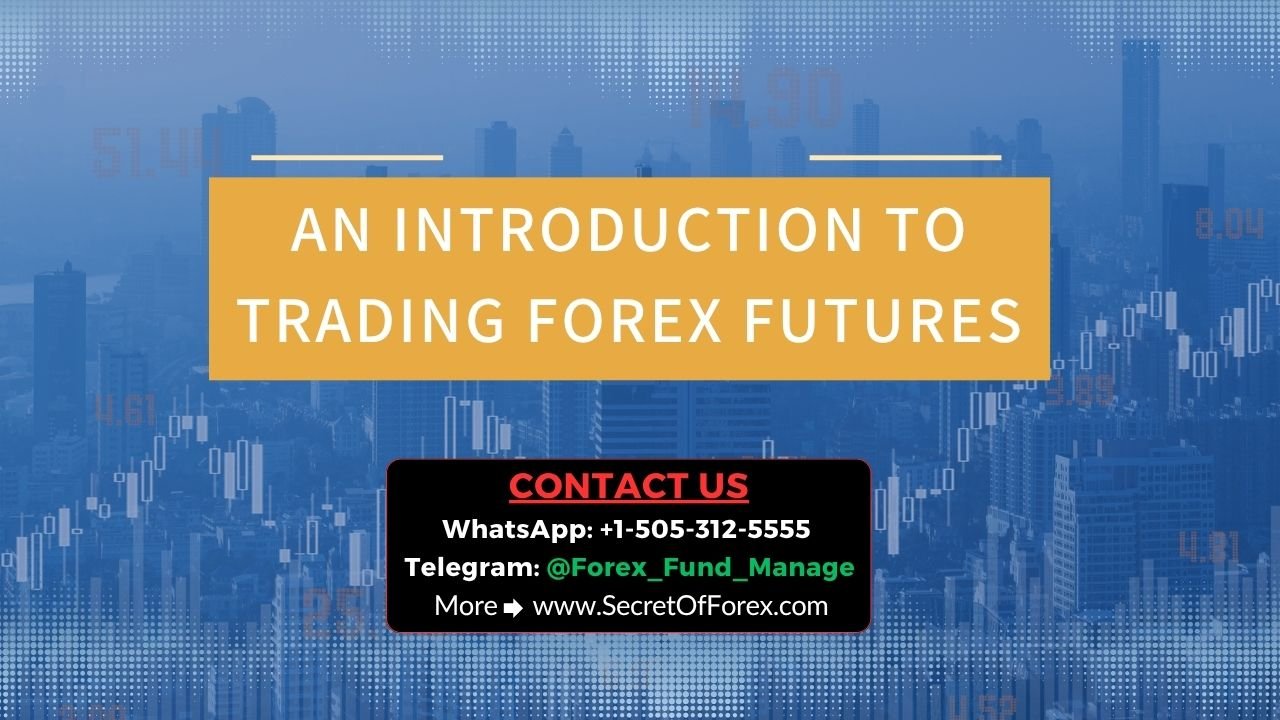Blog
An Introduction To Trading Forex Futures
Trading forex futures is an effective approach to engage in global currency markets. While most retail traders are acquainted with the spot forex market, in which currencies are exchanged at current values, forex futures provide a distinct alternative with features such as regulation, transparency, and standardized contracts. This introduction will explain the fundamentals of forex futures, including what they are, how they function, who trades them, and the dangers and advantages associated. An Introduction To Trading Forex Futures
Download Now Non-Repaint Indicator
Telegram Channel Visit Now
Fund Management Services Visit Now
What are Forex futures? – An Introduction To Trading Forex Futures
Forex futures are legally binding agreements to purchase or sell a particular quantity of a currency at a set price on a future date. In contrast to the decentralized spot forex market, forex futures are traded on controlled exchanges such as the Chicago Mercantile Exchange (CME). Each futures contract is defined in size, settlement date, and other criteria, ensuring market consistency and transparency.
For example, a CME Euro FX futures contract (EUR/USD) indicates a deal of 125,000 euros. The contract may be set to expire in three months, at which time it must be resolved unless the trader terminates it before.
How Forex Futures Differ from Spot Forex.
There are numerous significant distinctions between forex futures and the more well recognized spot FX market:
- Exchange-Traded vs. OTC: Forex futures are traded on exchanges, whilst spot forex is exchanged over the counter (OTC) by institutions and individuals.
Standardization: Futures contracts are standardized, with fixed expiry dates and contract sizes.
Settlement: Spot deals are settled within two business days, whilst futures are settled at a future date unless rolled over. - Regulation: Futures are subject to stronger regulation, resulting in better transparency and lower counterparty risk.
Who trades Forex Futures?
Participants in the FX futures market are often divided into three categories:
- Hedgers These are enterprises or financial organizations that are exposed to foreign currencies and seek to mitigate risk. For example, an American exporter who expects to be paid in euros in three months may sell euro futures to lock in the current currency rate.
- Speculators: These traders want to benefit from fluctuations in currency values. They are not interested in owning the underlying asset and instead utilize futures to profit from price changes.
- Arbitrateurs: They capitalize on price gaps across marketplaces, such as those between spot currency and futures pricing.
Benefits of Trading Forex Futures
- Transparency: Because futures are traded on regulated exchanges, all participants have access to same pricing and market data.
- Liquidity: Major forex futures markets are quite liquid, particularly for major currency pairings such as EUR/USD and GBP/USD.
Leverage: Futures allow you to hold huge positions with relatively minimal money, which may compound profits (and losses).
No Counterparty Risk: Because the clearinghouse guarantees the deal, there is minimal chance that the counterparty will fail.
How Does Forex Futures Trading Work
To trade FX futures, you must first create an account with a recognized futures broker. After depositing the requisite margin (a tiny fraction of the total contract value), the trader may purchase or sell contracts depending on market conditions.
For example, if a trader feels the euro will rise versus the US dollar, they may purchase a euro futures contract. If the price increases, they may sell the contract for a higher price and profit from the difference.
Traders should also be mindful of margin calls: if the market moves against a position and the account balance goes below the maintenance margin, the trader must deposit more cash to keep the position open.
Common Strategies for Forex Futures
- Trend Following: Traders employ technical analysis techniques to spot and track market patterns over time.
- News-Based Trading: Economic data releases, interest rate decisions, and geopolitical events may have a big influence on currencies, opening up new possibilities.
- Hedging: Futures contracts are used by businesses and investors to protect themselves against currency changes that might affect overseas investments or income.
- Spread Trading: This is the practice of purchasing one futures contract and selling another in order to profit from price differences across contracts or expiry dates.
The risks involved – An Introduction To Trading Forex Futures
Despite its advantages, FX futures have various risks:
- Leverage Risk: Leverage may raise earnings, but it also increases the risk of large losses.
Market Risk: Unpredictable events such as political instability, economic data, and interest rate fluctuations all have an impact on currency markets. - Liquidity Risk: While major currency pairings are liquid, some contracts may be sparsely traded, resulting in slippage or difficulties exiting holdings.
Expiration and Rollover Risk: Futures contracts expire, therefore traders must actively manage their holdings to prevent accidental delivery or settlement.
Download Now Non-Repaint Indicator
Telegram Channel Visit Now
Fund Management Services Visit Now
Conclusion:
Forex futures trading offers a simple and regulated approach to engage in global currency markets. They appeal to hedgers, speculators, and institutional investors equally because to their standardized contracts, high liquidity, and exchange-traded system safety. However, forex futures, like any other financial asset, include risks that must be understood and managed appropriately. For those eager to study and build strong tactics, forex futures provide a solid foundation for navigating the volatile world of currency trading.


